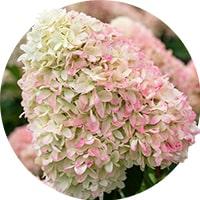
Hydrangea Plants
Hydrangea
- -10%
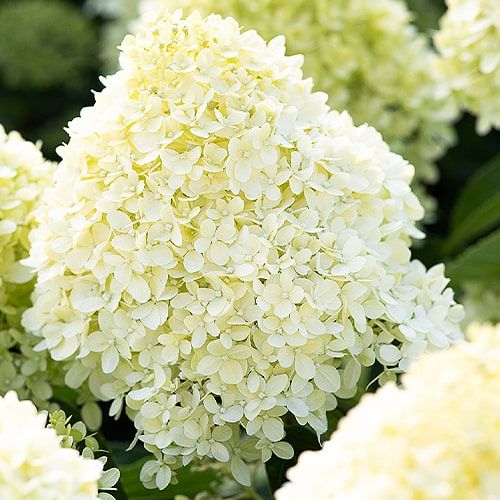 Hydrangea (Hortensia) Paniculata Cotton CreamSku: 21000021 plant in P12 pot in pkgIn stock€8,96 €9,95
Hydrangea (Hortensia) Paniculata Cotton CreamSku: 21000021 plant in P12 pot in pkgIn stock€8,96 €9,95 - -10%
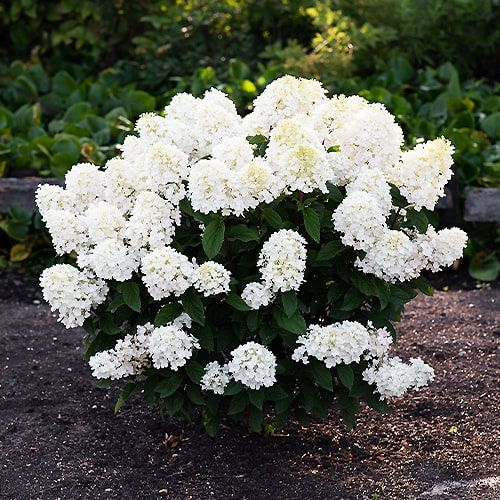 Hydrangea (Hortensia) Paniculata Little BlossomSku: 21000061 plant in P12 pot in pkgIn stock€8,96 €9,95
Hydrangea (Hortensia) Paniculata Little BlossomSku: 21000061 plant in P12 pot in pkgIn stock€8,96 €9,95 - -10%
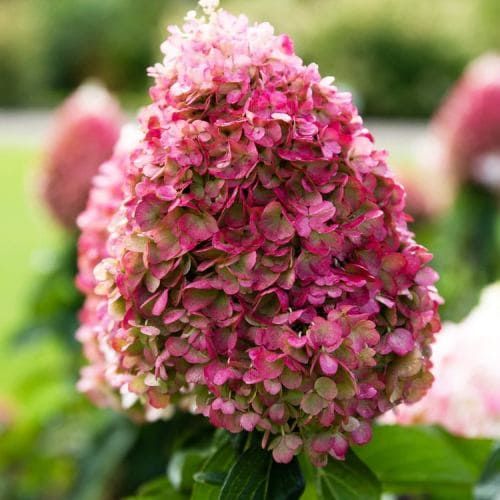 Hydrangea (Hortensia) Paniculata Pinky PromiseSku: 21000101 plant in P12 pot in pkgIn stock€8,96 €9,95
Hydrangea (Hortensia) Paniculata Pinky PromiseSku: 21000101 plant in P12 pot in pkgIn stock€8,96 €9,95 - -10%
 Hydrangea (Hortensia) Paniculata Sugar RushSku: 21000141 plant in P12 pot in pkgIn stock€8,96 €9,95
Hydrangea (Hortensia) Paniculata Sugar RushSku: 21000141 plant in P12 pot in pkgIn stock€8,96 €9,95 - -10%
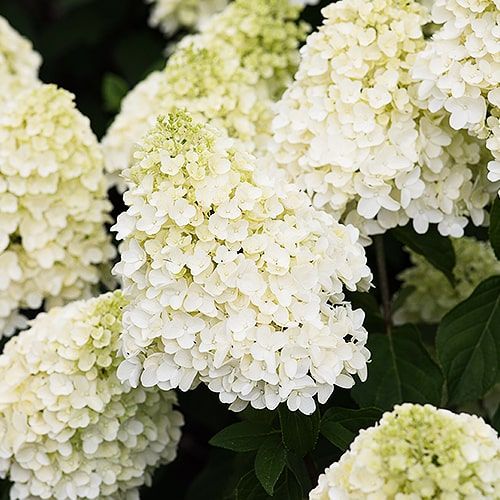 Hydrangea (Hortensia) Paniculata Summer SnowSku: 21000161 plant in P12 pot in pkgIn stock€8,96 €9,95
Hydrangea (Hortensia) Paniculata Summer SnowSku: 21000161 plant in P12 pot in pkgIn stock€8,96 €9,95 - -10%

- -10%
 Hydrangea (Hortensia) Paniculata Little RosySku: 21000361 plant in P12 pot in pkgOut of stock€8,96
Hydrangea (Hortensia) Paniculata Little RosySku: 21000361 plant in P12 pot in pkgOut of stock€8,96 - -30%
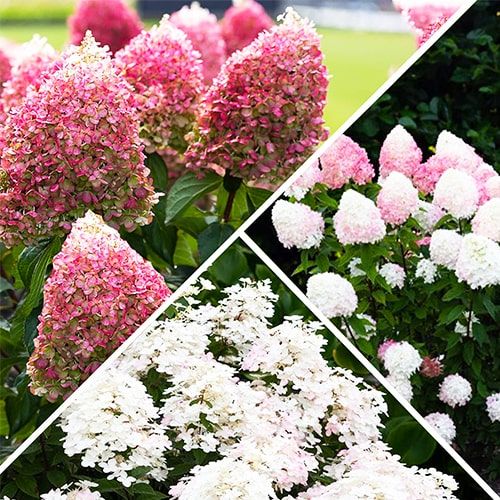 Hydrangea (Hortensia) Paniculata CollectionSku: 21000393 plants in P12 pot in pkgIn stock€27,95 €39,93
Hydrangea (Hortensia) Paniculata CollectionSku: 21000393 plants in P12 pot in pkgIn stock€27,95 €39,93
Last Reviews
We planted the hydrangeas, some of them comes out of the soil, I hope ech will do that.
Thank you Dutch-bulbs.
Hydrangeas: Majestic Blooms for Your Garden
Thank you for visiting our thorough guide to the fascinating world of hydrangeas! Gardeners and flower lovers alike have long cherished these gorgeous flowering plants. Hydrangeas can readily improve the appeal of any garden or house interior thanks to their huge, stunning flowers and variety of brilliant colors. In this post, well look at the different kinds of hydrangeas, their advantages, and provide you helpful advice on how to take care of and use these lovely plants in your designs.
Discover the Beauty of Hydrangeas
There is no denying the amazing beauty and charm of these perennial plants. They are sure to steal the stage in any garden with their luscious and abundant flowers. Clusters of tiny, fragile blooms make up the plants distinctive flower structure, which together produce a captivating and eye-catching display.
There are many different hues of hydrangeas, including white, pink, blue, and purple. You can choose the ideal shade to go with your garden or home decor thanks to the variety. There is a hydrangea type that will fit your taste and style, whether you favor the delicate pastel tints or the bold and colorful tones.
Why Choose Hydrangeas for Your Garden?
When it comes to selecting plants for your garden, hydrangeas offer numerous advantages that make them an excellent choice. Lets explore some of the key reasons why you should consider incorporating these majestic blooms into your outdoor oasis:
1. Stunning Flower Varieties
The remarkable variety of flower types on hydrangeas, each with a special charm, is something to behold. There are many alternatives, ranging from the traditional mophead hydrangeas with their huge, rounded flowerheads to the beautiful lacecap hydrangeas with their delicate, flat clusters. You may choose the ideal variety of hydrangea flowers to match your individual preferences and garden style thanks to their wide selection.
2. Versatile Garden Performers
Hydrangeas are incredibly versatile plants that thrive in a variety of garden settings. Whether you have a sunny garden bed, a partially shaded area, or a corner that receives limited sunlight, there is a hydrangea variety that will flourish in your specific conditions. Their adaptability makes them a valuable addition to any garden, regardless of its characteristics.
3. Long-lasting Blooms

One of the most remarkable aspects of hydrangeas is their ability to provide long-lasting blooms throughout the growing season. While some plants may only offer a fleeting moment of beauty, hydrangeas continue to grace your garden with their magnificent flowers for an extended period. This extended blooming season ensures that you can enjoy their captivating presence for months on end.
Exploring the Types of Hydrangeas
Now that weve established the allure of hydrangeas, lets delve into the different types of this remarkable plant. By familiarizing yourself with the various hydrangea varieties, you can make an informed choice when selecting the perfect addition to your garden:
Bigleaf Hydrangeas
Bigleaf hydrangeas (Hydrangea macrophylla) are a popular choice known for their large and showy blooms. They are further divided into two categories: mophead hydrangeas and lacecap hydrangeas. Mophead hydrangeas have large, rounded flowerheads, while lacecap hydrangeas feature delicate, flat clusters of flowers. These hydrangeas are particularly striking and are available in a range of captivating colors.
Panicle Hydrangeas
Panicle hydrangeas (Hydrangea paniculata) offer a different aesthetic, characterized by elongated cone-shaped flowerheads. These hardy hydrangeas are known for their resilience and ability to thrive in various climates. They bloom from mid to late summer and often transition from white to shades of pink as the season progresses, adding visual interest to your garden.
Oakleaf Hydrangeas
Oakleaf hydrangeas (Hydrangea quercifolia) are prized for their distinctive foliage, which mimics oak tree leaves. These hydrangeas have gorgeous extended flower clusters in addition to their lovely foliage. They provide a sense of class to any garden, especially in the fall when their foliage turns rich colours of crimson, orange, and purple.
Smooth Hydrangeas
Smooth hydrangeas (Hydrangea arborescens) are well-known for producing masses of gorgeous white flowerheads. They are popular among both novice and experienced gardeners due to their dependability and versatility. Smooth hydrangeas flourish in a variety of soil conditions and are especially well-suited for gardens with partial shade.
Caring for Your Hydrangeas
When it comes to adding beauty and elegance to your garden or home, few plants can match the charm of hydrangeas. These delightful flowering shrubs come in a variety of colors and shapes, making them a versatile choice for any landscape. Whether youre a seasoned gardener or a beginner with a green thumb, caring for your hydrangeas properly is crucial to ensure their health and vibrant blooms. In this comprehensive guide, well explore the best practices for planting, watering, pruning, and maintaining your hydrangeas.
1. Proper Planting Techniques
To give your hydrangeas the best start, follow these planting tips:
- Choose the right location: Hydrangeas thrive in well-drained soil with partial shade. Find a spot in your garden that receives morning sun and afternoon shade to create the perfect growing conditions.
- Prepare the soil: Before planting, enrich the soil with organic matter such as compost or well-rotted manure. This will improve drainage and provide essential nutrients for healthy growth.
- Dig the right hole: Dig a hole twice as wide and as deep as the plants root ball. Gently loosen the roots before placing the hydrangea in the hole, ensuring it sits at the same depth as it was in the nursery container.
- Backfill and water: Fill the hole with soil, firming it gently around the roots. Water thoroughly to settle the soil and eliminate air pockets.
2. Watering and Moisture Requirements
Hydrangeas have specific watering needs to maintain their lush foliage and vibrant flowers:
- Consistent moisture: Hydrangeas prefer consistently moist soil, but they dont like to sit in waterlogged conditions. Water deeply whenever the top inch of soil feels dry to the touch.
- Mulch for moisture retention: Apply a layer of organic mulch around the base of your hydrangeas to help retain moisture in the soil. This will also prevent weed growth and protect the roots during extreme temperatures.
- Avoid overhead watering: While hydrangeas appreciate moisture, its best to water at the base of the plant rather than overhead. Overhead watering can lead to leaf diseases and diminish the flower quality.
- Hydrangea care during hot summers: In hotter climates or during heatwaves, provide extra water to keep the soil adequately moist. Consider using drip irrigation or a soaker hose to ensure deep watering without excessive evaporation.
3. Pruning and Maintenance
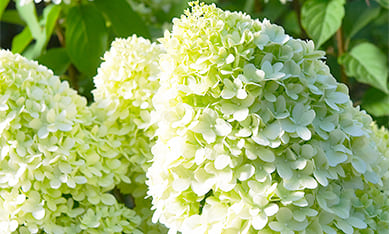
Pruning hydrangeas helps promote healthier growth and enhances the plants overall appearance. Follow these tips for proper pruning and maintenance:
- Prune at the right time: The timing of pruning depends on the hydrangea variety. For those that bloom on new wood (e.g., Hydrangea paniculata and Hydrangea arborescens), prune in late winter or early spring before new growth emerges. For varieties that bloom on old wood (e.g., Hydrangea macrophylla), prune immediately after flowering.
- Remove dead and weak stems: Regularly inspect your hydrangeas for dead or weak stems and promptly remove them. This will encourage healthier growth and prevent disease.
- Shape and size control: If you wish to shape or control the size of your hydrangea, prune selectively. Trim back overgrown branches to maintain a desirable form, but avoid excessive pruning, as it may reduce next years blooms.
Designing with Hydrangeas
Beyond their care requirements, hydrangeas offer endless opportunities for incorporating beauty and charm into your garden or home. Lets explore some design ideas to unleash the full potential of these remarkable plants.
Creating Stunning Flower Borders
Hydrangeas make a striking addition to flower borders, providing a burst of color and texture. Pair hydrangeas with other plants that share similar light and moisture requirements, such as hostas, ferns, and astilbes. This will create a harmonious and visually appealing flower border.
Take advantage of the vast array of hydrangea colors available, including vibrant blues, pinks, purples, and whites. Experiment with different color combinations to achieve the desired effect. Also plant hydrangeas of varying heights to create depth and visual interest in your flower border. Combine them with plants that have different leaf shapes and textures for a more dynamic composition.
Adding Color to Shaded Areas
Hydrangeas are renowned for their ability to thrive in shade, making them an excellent choice for brightening up darker corners of your garden. Some hydrangea varieties, such as Hydrangea macrophylla (also known as mophead or lacecap hydrangeas), are well-suited for growing in shady locations. These varieties will thrive and produce vibrant blooms even with limited direct sunlight.
Combine hydrangeas with shade-loving plants that have attractive foliage, such as ferns, heucheras, or hostas. This will create a visually appealing display even when the hydrangeas are not in bloom.
Hydrangeas in Containers
If you have limited space or prefer container gardening, hydrangeas can still be a delightful addition to your outdoor or indoor decor. Opt for a large container with drainage holes to allow excess water to escape. Select a potting mix specifically formulated for container gardening to ensure adequate drainage and nutrient availability.
While hydrangeas can tolerate some shade, they still require a few hours of direct sunlight each day to thrive. Place your container in a location that receives morning sun and afternoon shade.
Container-grown hydrangeas require more frequent watering than those in the ground. Check the soil moisture regularly and water when the top inch feels dry. Feed with a balanced slow-release fertilizer to provide essential nutrients throughout the growing season.
Unlock the Beauty of Hydrangeas in Your Garden
With their captivating blooms and versatility, hydrangeas have become a favorite among gardeners and homeowners alike.By the way, if you are interested in these elegant flowers, we can also recommend you to check peonies. By following the proper care techniques outlined above and incorporating these stunning plants into your garden or home design, you can enjoy their beauty year after year.
Whether youre looking to buy hydrangeas online or seeking the best hydrangea nursery near you, remember to choose a reliable source that offers a wide variety of hydrangea plants for sale. Dont forget to explore the range of hydrangea care products and landscaping supplies available to ensure your hydrangeas receive the attention they deserve.
Experience the joy of growing hydrangeas and witness the beauty they bring to your surroundings. Create breathtaking flower borders, add splashes of color to shaded areas, or cultivate them in containers to enjoy their charm up close. Embrace the allure of hydrangeas and transform your garden or home into a haven of natural beauty.
Frequently asked questions about Spring Flowering Hydrangea Plants
What are hydrangeas?
Which Dutch hydrangea species and varieties does your shop offer?
We have a wide selection of hydrangea species and varieties in our online shop. These include, for example, the farmer's hydrangea (Hydrangea macrophylla), the panicle hydrangea (Hydrangea paniculata) and the velvet hydrangea (Hydrangea arborescens). Within these species, we offer different varieties with different flower colours and growth forms.
Can I buy hydrangeas all year round?
Yes, you can buy hydrangeas in our shop all year round. However, the availability of certain varieties may depend on the season. As a rule, hydrangeas are particularly available in spring and summer.
What care do Danish hydrangeas need?
Hydrangeas generally require a semi-shady to sunny location and well-drained soil. The exact care requirements may vary depending on the variety. Make sure you water and fertilise your hydrangeas sufficiently. Further information on care can be found in our care instructions.
Can I buy this product in your shop?
Yes, you can buy hydrangeas and related products in our online shop. We offer a wide range of hydrangea species and varieties as well as matching accessories such as flower pots and fertilisers.











